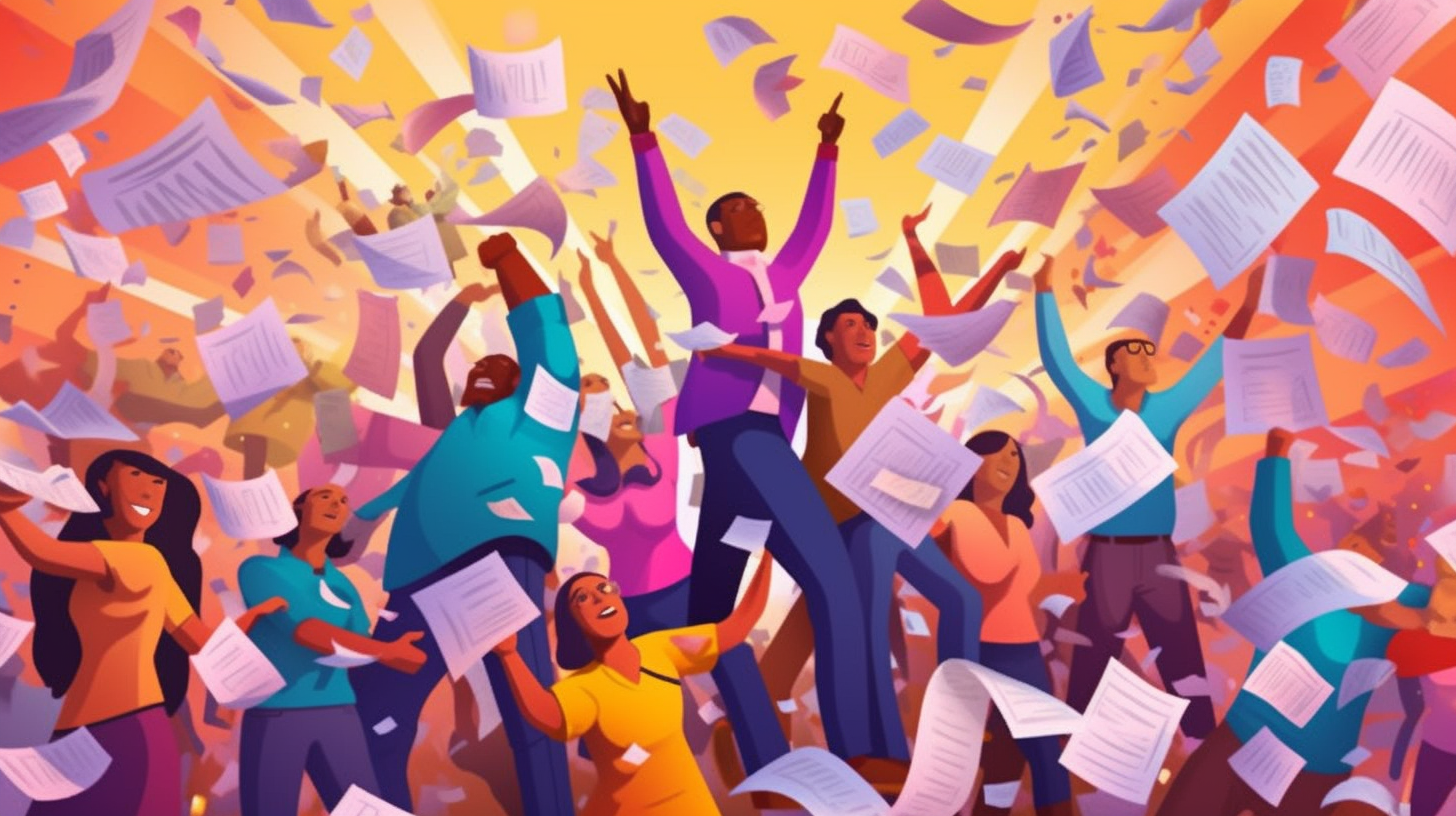How Project Re:Form busted bureaucracy and made public services more human

Americans spend a whopping 10.5 billion hours per year filling one or more of the nearly 10,000 unique forms to access services from Federal agencies (or comply with government requirements, like tax filings). That works to about 41 hours per adult. Add to that the time spent by government employees processing each of the 106 billion forms filed annually, and you get a staggering amount of effort going into paperwork and administration.
The problem isn’t just about the colossal amount of time spent filling and processing forms, which arguably could have been directed to more productive uses. Administrative burdens also make it difficult for citizens to access government services, creating unnecessary hardship and inequity. The good news is that we can roll back much of this friction-filled, bureaucratic labyrinth and bring humanity back into government services. Initiatives like Michigan’s Project Re:Form show us how.
Back in 2015, it was clear that Michigan’s public benefits system was failing both the residents it aimed to serve and the government workers who administered it. A big part of the problem was the convoluted process used by the state’s Department of Health and Human Services (MDHHS). People seeking to enroll in MDHHS programs (such as healthcare, food assistance, and child care) had to fill out DHS-1171, a 42-page document seemingly designed to emulate the experience of K. in Franz Kafka’s The Castle. DHS-1171 included over a thousand questions, including gems like this: “what is the date of conception of your children?” The form, which grew progressively unwieldy as processes and departments were combined, was the longest application of its kind in the United States.
Enter Civilla, a Detroit-based, non-profit design studio dedicated to founded by Lena Selzer, Adam Selzer, and Michael Brennan. In partnership with MDHHS, Civilla launched Project Re:Form with the aim of reimagining the public benefits application process. The goal was not just to simplify the application, but to make it faster, more humane, and centered around the people it was meant to serve.
The team at Civilla began the project by hosting hundreds of conversations with citizens and staff from multiple state agencies. They heard tales of administrative indifference, of people feeling like a number rather than a human with a unique story.
They heard from frontline caseworkers who were expected to process hundreds of these giant applications at once, often feeling they were forced to choose “paper over people.”
“The old application is cumbersome and time consuming. it makes me collect so much information that it’s painful to even get to the human story.” — Case Worker.
Armed with these insights, the Project Re:Form team set out to design a new application. They created a streamlined form from the ground up, integrating the state’s largest five benefits programs into a single access point. The new application was 18 pages long, with 80% fewer questions.

The new form was put to the test in two field offices. Citizens reported they could complete the application more reliably and quickly: 90% of people felt confident they could correctly fill out the application by themselves, 90% of people were able to apply in less than 20 minutes. For frontline staff, the new design resulted in more thorough and accurate applications, and a 42% drop in processing times.
Buoyed by the success of the pilot, the Project Re:Form team focused on introducing the new application across the state. Instead of defaulting to top-down mandates and hoping everybody will comply, Civilla and the MDHHS took a high-involvement, high-inclusion approach. After combing over 1,700 pages of policy requirements, they secured approvals from federal funding agencies like the US Department of Health and Human Services. They organized in-person training sessions to introduce the new forms and processes to over 5,000 state workers across 100+ offices, relying a “peer-to-peer” learning approach.
When it was time to engage with legislators, union leaders, and state policy makers, the Project Re:Form team walked these stakeholders through an interactive exhibit in Michigan’s capital. The space showcased a citizen's experience with the old application process, providing poignant examples of needless administrative complexity and callousness. As Civilla co-founder Adam Selzer put it, the exhibit “was designed intentionally to have them feel how it felt to interact with the system, not just intellectually understand it… this is one of the biggest reasons we ended up taking a step toward working with state.”
Since its statewide implementation in 2018, the new application has not only reduced MDHHS’ operational burden but also improved the citizen experience for millions of Michigan residents. The project was recognized by Harvard University as notable innovation in American government and has received several design awards.
Project Re:Form shows that it’s possible to challenge bureaucratic dysfunction and envision a better way to serve people. The team did not settle for minor tweaks or incremental improvements; instead, they dared to imagine a radically simplified application process, working from the citizen-back. This story is also a great testament to the power of socially constructed change. Top-down mandates seldom work. For system change to stick, it needs to be open to all voices (especially those which are typically marginalized), collaborative, and experimental.
There is no reason Project Re:Form couldn’t be replicated more broadly. We just need to overcome our learned helplessness, and change the way we pursue change.
